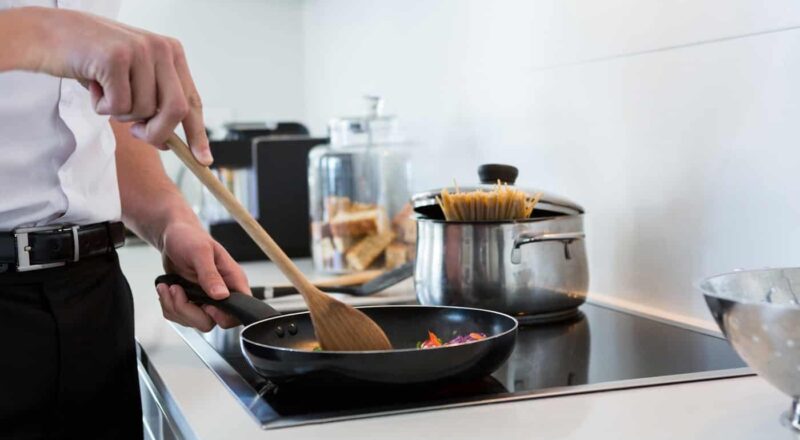Cooking with cast iron on an induction cooktop is a delightful experience. The heat distribution and retention properties of cast iron make it a favorite among chefs and home cooks alike. However, after enjoying the culinary delights, the task of cleaning the cast iron cookware begins. Understanding how to clean cast iron after induction cooking is crucial to maintaining its quality and ensuring its longevity.

The Importance of Proper Cleaning
When it comes to cast iron, proper cleaning is essential. Not only does it maintain the cookware’s surface, but it also ensures that the seasoning remains intact. Seasoning is the protective layer that keeps your cast iron non-stick and rust-free.
Materials Needed for Cleaning
- Warm water
- Mild dish soap
- Soft brush or sponge
- Clean towel
- Vegetable oil or shortening
Step-by-Step Cleaning Process
1. Allow the Pan to Cool
After cooking, allow your cast iron pan to cool down naturally. Avoid immersing it in cold water immediately as this can cause thermal shock and potential warping.
2. Rinse with Warm Water
Rinse the pan under warm water, gently scrubbing away any food residues with a soft brush or sponge. If necessary, use a small amount of mild dish soap.
3. Dry Completely
Use a clean towel to dry the pan thoroughly. It is crucial to remove all moisture to prevent rusting.
4. Re-Season the Pan
Once the pan is dry, apply a thin layer of vegetable oil or shortening to its surface. This step helps to maintain the seasoning and protects the pan from moisture.
Common Mistakes to Avoid
Using Harsh Detergents
Avoid using harsh detergents or abrasive scrubbers that can strip away the seasoning.
Soaking in Water
Never soak your cast iron in water for extended periods as it can lead to rust.
Maintaining Your Cast Iron
Consistent and proper cleaning will extend the life of your cast iron cookware. Regularly checking for signs of rust and addressing them promptly can prevent long-term damage.
Why Induction Cooking is Beneficial for Cast Iron
Induction cooking offers precise temperature control, which is beneficial for cast iron. The even heat distribution ensures that food is cooked uniformly, enhancing the cooking experience.
How to Avoid Scratches with Cast Iron on Induction
To avoid scratches, always lift your cast iron pan when moving it on the induction hob. Dragging it can damage both the pan and the cooktop. Learn more about avoiding scratches.
Making Pizza on Cast Iron with Induction
Cooking pizza on cast iron using an induction cooktop can yield delicious results. The even heating ensures a perfectly crispy crust. For tips, click here.
Searing Meat in Cast Iron on Induction
One of the best uses of cast iron on induction is searing meat. The high heat retention provides a perfect sear. For more insights, learn more.
Making Pancakes on Cast Iron Induction
Induction cooking is ideal for making pancakes on cast iron. The even heat distribution ensures perfectly cooked pancakes every time. Discover more about this cooking method.
Does Induction Heat Cast Iron Evenly?
Induction cooktops are known for their even heat distribution, making them perfect for use with cast iron. To understand more about how induction works with cast iron, read more here.
External Insights on Induction and Cast Iron
For more insights into how induction cooktops function with cast iron pans, visit Homes and Gardens.

FAQs
1. Can I use soap on cast iron?
Yes, mild dish soap can be used, but avoid harsh detergents.
2. Why is re-seasoning important?
Re-seasoning helps to maintain the non-stick surface and protects against rust.
3. How do I remove rust from cast iron?
Gently scrub the rust away with a soft brush, rinse, dry thoroughly, and re-season.
This article contains affiliate links. We may earn a commission at no extra cost to you.

